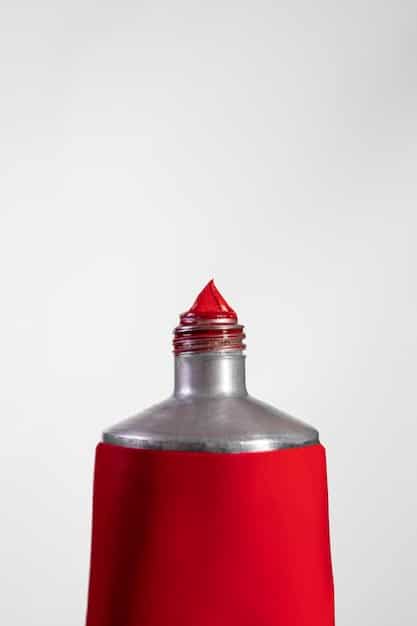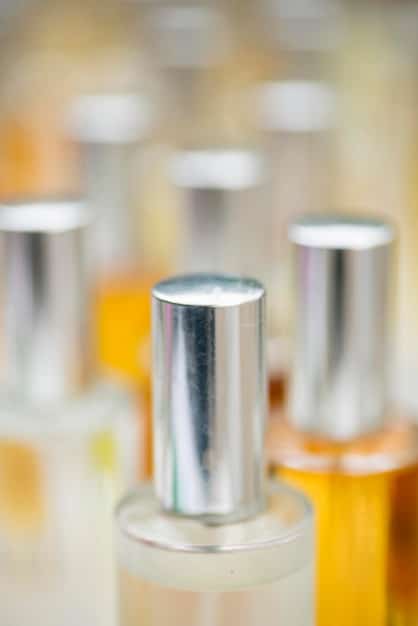Spotting Fake German Perfumes: A 7-Point Checklist to Authenticity

Advertisements
Learn how to identify authentic German perfumes and avoid counterfeits with our detailed 7-point checklist. This guide covers essential aspects like packaging, scent complexity, batch codes, and retailer credibility, ensuring you invest only in genuine, high-quality fragrances from Germany.
Navigating the world of luxury fragrances can be exciting, but also risky. Counterfeit perfumes are a growing problem, and unsuspecting buyers often end up with diluted, low-quality imitations. This is especially true for highly sought-after brands from countries known for their perfume craftsmanship, like Germany. Our comprehensive guide, “How to Identify Authentic German Perfumes and Avoid Counterfeits: A 7-Point Checklist,” equips you with the knowledge to detect fakes and ensure you’re buying the real deal.
Advertisements
The Rise of Counterfeit Perfumes: Why Authenticity Matters
The allure of owning a luxury German perfume is undeniable. These fragrances are crafted with precision, using high-quality ingredients and traditional techniques. However, the increasing demand has led to a surge in counterfeit perfumes, often sold at enticingly lower prices. But beware, these fakes come at a cost.
Authenticity matters because counterfeit perfumes are not only a financial rip-off but also pose potential health risks. These imitations often contain cheap, synthetic ingredients that can cause skin irritations, allergic reactions, or even respiratory problems. Furthermore, the scent profile is usually flat and short-lived, lacking the complexity and longevity of genuine German perfumes.
Advertisements
Health Risks of Counterfeit Perfumes
The ingredients used in fake perfumes are often unregulated and can include harmful chemicals. These can trigger:
- Skin rashes and irritation
- Allergic reactions, such as hives or eczema
- Respiratory problems like asthma or coughing
- Headaches and nausea due to the strong, synthetic fragrances
The Financial Implications
Beyond the health risks, buying counterfeit perfumes also hurts legitimate businesses and the economy. It undermines the reputation of established brands and defrauds consumers who are expecting a high-quality product. Investing in authentic German perfumes ensures you are supporting ethical businesses and receiving a product that meets stringent quality standards.
So, how can you protect yourself from falling victim to these counterfeit products? The following 7-point checklist will help you navigate the world of German perfumes and ensure you’re getting what you pay for.

Checklist Point 1: Examine the Packaging with a Critical Eye
The packaging is often the first giveaway when it comes to spotting a fake. Authentic German perfumes are packaged with meticulous attention to detail. Look for subtle inconsistencies that can indicate a counterfeit product.
Start by examining the box. Is the cardboard of high quality? Does the print appear crisp and clear, or is it blurry and faded? Authentic perfume boxes should have sharp, vibrant colors and precise lettering.
Cellophane Wrapping
Most genuine perfumes come sealed in cellophane wrapping. However, the quality of the wrapping can vary significantly. Genuine perfumes will have cellophane that is:
- Tightly wrapped around the box
- Smooth and without wrinkles
- Folded neatly and securely
Examine the cardboard box and cellophane wrapping to ensure they meet these standards. Counterfeit perfumes often have loose, wrinkled, or poorly sealed cellophane.
Checklist Point 2: Decode the Bottle Design and Quality
The perfume bottle itself is another crucial indicator of authenticity. German perfume brands are renowned for their elegant and sophisticated bottle designs, often crafted from high-quality glass.
Feel the weight and texture of the glass. Authentic bottles should feel substantial and smooth to the touch. Scrutinize the uniformity of the glass, checking for any imperfections, such as bubbles, streaks, or uneven thickness. The shape should be symmetrical and precisely formed.
Nozzle and Spray Mechanism
The nozzle and spray mechanism are also important details to consider:
- The nozzle should be made of high-quality metal, not cheap plastic.
- The spray should be fine and even, distributing the fragrance evenly.
- The pump should operate smoothly without leaking or sputtering.
Test the spray mechanism several times before purchasing to ensure it functions correctly. A faulty or cheap-feeling nozzle is a red flag.

Checklist Point 3: Investigate the Batch Code
The batch code is a crucial piece of information that can reveal the authenticity of a perfume. This alphanumeric code is typically printed or engraved directly onto the bottle or the packaging.
The batch code serves as a unique identifier for a specific production batch. It allows manufacturers to track the perfume’s origin, production date, and other relevant information. A missing or tampered-with batch code is a clear indication of a counterfeit product.
Where to Find the Batch Code
The batch code can usually be found:
- Printed on the bottom of the perfume bottle
- Engraved on the side of the bottle
- Printed on a sticker affixed to the box
Once you’ve located the batch code, compare it with the code on the packaging (if available). The two codes should match perfectly. If they don’t, the perfume is likely a fake.
Checklist Point 4: Evaluate the Scent: Complexity and Longevity
One of the most defining characteristics of authentic German perfumes is their complex and well-balanced scent. These fragrances are crafted using high-quality ingredients and a meticulous blending process, resulting in a multi-layered scent profile that evolves over time.
Counterfeit perfumes, on the other hand, often have a simple, one-dimensional scent that fades quickly. They may mimic the initial notes of the original but lack the depth and complexity that develops as the fragrance interacts with your skin.
Top, Middle, and Base Notes
Authentic perfumes are composed of three distinct layers of scent:
- Top notes: The initial impression, usually light and fresh.
- Middle notes: The heart of the fragrance, developing after the top notes fade.
- Base notes: The long-lasting foundation, providing depth and warmth.
Pay attention to how the scent evolves over time. A genuine German perfume will reveal these layers gradually, creating a captivating and long-lasting experience.
Checklist Point 5: Price vs. Authenticity: A Word of Caution
The price of a perfume can be a significant indicator of its authenticity. While everyone loves a good deal, steeply discounted prices on luxury items should raise a red flag. Authentic German perfumes are crafted with high-quality ingredients and follow stringent manufacturing processes, which naturally translate into a higher price point.
If a deal seems too good to be true, it probably is. Counterfeiters often lure unsuspecting buyers with drastically reduced prices, hoping to make a quick profit. Before making a purchase, research the average retail price of the perfume you’re interested in. If the price is significantly lower than the average, proceed with caution.
Where to Buy Authentic Perfumes
To ensure you’re buying genuine products, purchase your perfume from:
- Authorized retailers
- Reputable department stores
- The brand’s official website
Checklist Point 6: Scrutinize the Retailer’s Credibility
The retailer you choose to purchase your perfume from can greatly impact your chances of buying an authentic product. Opting for reputable and authorized retailers significantly reduces the risk of encountering counterfeit perfumes.
Authorized retailers have a direct relationship with the perfume brand and are guaranteed to sell genuine products. These retailers often include department stores, specialty perfume shops, and the brand’s own boutiques or online stores.
Red Flags for Shady Retailers
Be wary of retailers who:
- Sell perfumes from street vendors or flea markets
- Offer very low prices without a clear explanation
- Have a poor online reputation with numerous complaints
Checklist Point 7: Compare with Official Sources
One of the most effective ways to verify the authenticity of a German perfume is to compare it with official sources. This involves carefully examining the product against images and descriptions available on the brand’s official website or other authorized platforms.
Pay close attention to details such as the bottle design, label placement, font style, and packaging. Any discrepancies between the product you’re evaluating and the official sources could indicate a counterfeit.
Utilize Online Resources
Many online communities and forums are dedicated to discussing and spotting counterfeit perfumes. These resources can provide valuable insights and tips from experienced collectors and enthusiasts.
By following these seven key points, you can significantly increase your chances of identifying authentic German perfumes and avoiding the pitfalls of counterfeit products.
| Key Aspect | Brief Description |
|---|---|
| 📦 Packaging | High-quality cardboard, clear print, tight cellophane without wrinkles. |
| 🧴 Bottle Quality | Heavy, smooth glass; symmetrical shape; no imperfections. |
| 🔢 Batch Code | Matching print on bottle and packaging; should be present and clearly legible. |
| 👃 Scent | Complex layers (top, middle, base notes); scent evolves and lasts longer. |
FAQ
▼
Counterfeit perfumes often contain cheap, unregulated chemicals that can cause skin irritation, allergic reactions, or respiratory issues. They also lack the complex scent profile and longevity of authentic perfumes.
▼
Purchase your perfume from authorized retailers, reputable department stores, or the brand’s official website. These sources are guaranteed to sell genuine products and provide a reliable shopping experience.
▼
Contact the retailer where you purchased the perfume and request a refund. You can also report the counterfeit product to the brand manufacturer and relevant consumer protection agencies in your area.
▼
Fake perfumes can be significantly cheaper, sometimes offered at 50% or even 70% below the retail price of the authentic product. This drastic price difference is a major red flag.
▼
Yes, the batch code is a crucial element. Make sure the batch code on the bottle matches the one on the packaging. A missing or tampered batch code is a significant warning sign of a fake perfume.
Conclusion
In conclusion, purchasing authentic German perfumes requires vigilance and attention to detail. By following these seven essential checkpoints – examining packaging, bottle quality, batch codes, scent complexity, price credibility, retailer reputation, and official comparisons – you’ll be well-equipped to identify counterfeit products and ensure you invest in the genuine article. Remember, prioritizing authenticity protects your health, supports ethical businesses, and guarantees a luxurious and long-lasting fragrance experience.